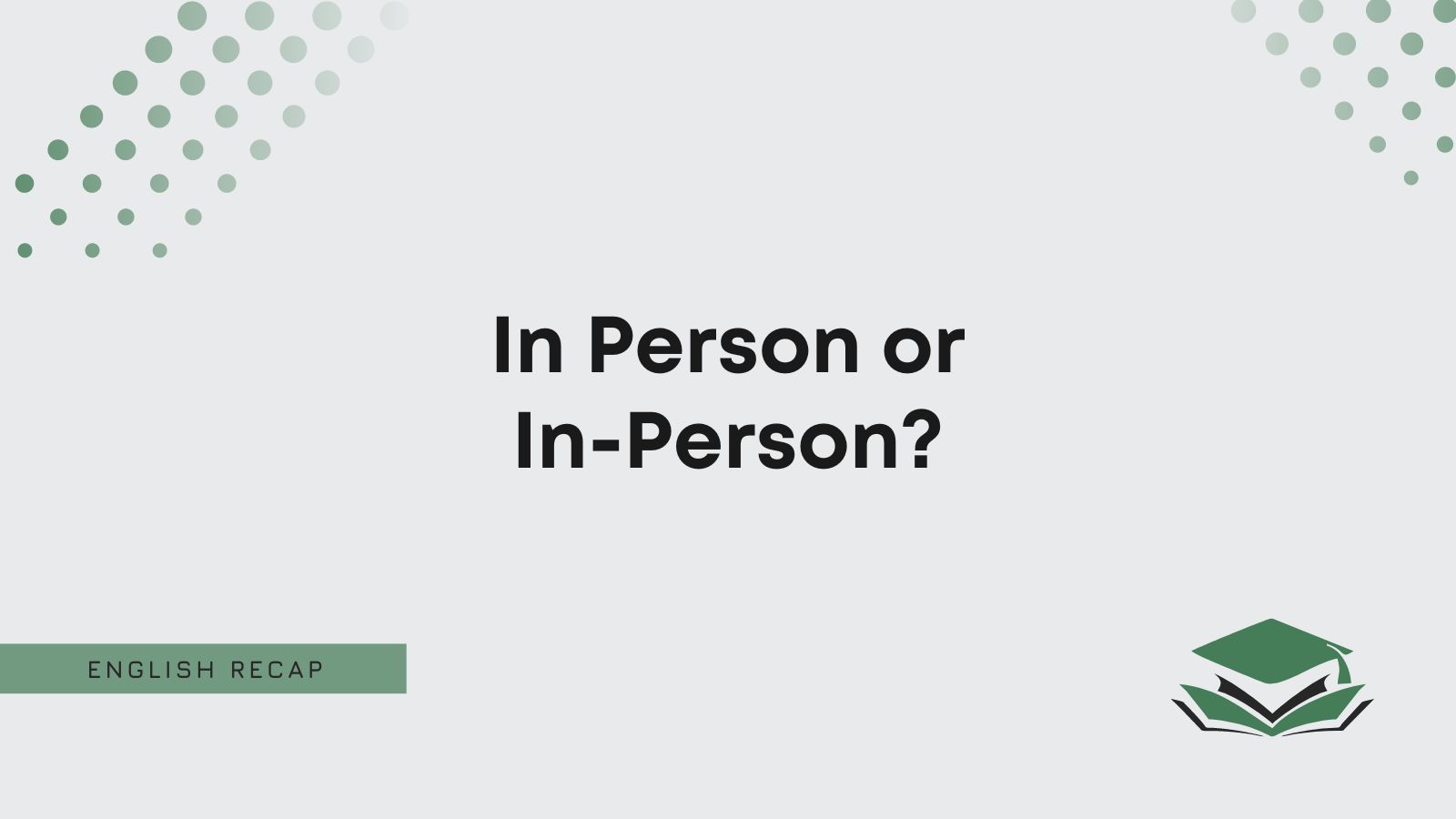In person and in-person are both correct but different. In person is an adverb, so it must describe a verb. E.g., “We met in person rather than online.” However, in-person is an adjective and is followed by a noun. E.g., “We want an in-person meeting with your teacher.”
You can use the term in person and the hyphenated version in-person to indicate that you will do something while physically present rather than virtually. They are both correct, and the only difference between them is the sentence structure around them.
The version without the hyphen, in person, is an adverb, so it has to describe a verb.
- I prefer attending in person rather than virtually.
- It’s always more impactful to deliver bad news in person rather than over the phone.
- She decided to introduce herself to the team in person to make a good first impression.
In comparison, the version with the hyphen, in-person, is an adjective, so it has to describe a noun.
- I prefer attending in-person classes to virtual ones.
- The company offers both online and in-person training sessions for its employees.
- Due to recent health guidelines, the number of in-person events has been limited.
In the first of the above examples, the phrase in person describes how the person prefers to talk. Whereas in the second example, the term in-person describes the format of the class.
Furthermore, AP Style and the Chicago Manual of Style both follow the same grammar rule concerning the hyphen with the phrase in person.
Moreover, you should follow the same rules in both the US and the UK.
Now you have learned the basics about how to use in-person and in person, keep reading to learn more about each term and how to use it.
In Person
The form in person without a hyphen is an adverb that you use to say you will do a particular verb physically rather than virtually.
- We will meet in person next week for the welcome dinner.
As the example shows, the phrase in person always describes a verb. In this case, the verb is meet, but you can also use other related verbs.
As shown in this example, which uses the verb join.
- I want you to join us in person for next week’s conference.
Feel free to have a look at these examples to learn more about how to use in person in a sentence:
- After years of online correspondence, they finally met in person.
- I need to apologize in person; a text message just won’t suffice.
- She plans to deliver the gift in person to ensure it arrives safely.
- To fully appreciate the art, you must view it in person.
- Instead of sending a representative, the CEO will address the concerns in person.
In-Person
The term in-person is a compound adjective with a hyphen between the two words. In contrast to adverbs, adjectives modify nouns rather than verbs.
The following examples show the term in-person modifying a noun.
- We had an in-person event last night at work.
- Due to the pandemic, the annual in-person conference was shifted to a virtual format last year, but this year we’re back to the traditional setup.
- The company values in-person interactions, so they organize team-building activities every quarter.
- I miss attending in-person lectures; they provide a different kind of engagement compared to online classes.
- The in-person workshop was far more effective than the webinar versions we’ve previously held.
Therefore, when deciding whether to use the version with or without the hyphen, you need to identify whether you are modifying a noun or a verb. In the above example, we modify the word event, which is a noun.
Inperson
The term inperson as one word with no hyphen is incorrect, and you should not use it in this form.
However, there are two correct spellings that you can use instead of the term inperson.
The first is in person as two words without a hyphen, in which case it is an adverb. Secondly, you can write in-person as one word connected by a hyphen. In this case, it is an adjective.
- We chose to meet in person tomorrow night. (adverb)
- I had an in-person interview rather than an online one. (adjective)
Example Sentences
In case you are still not comfortable using in person and in-person, we’ve gathered some extra example sentences for you:
- The in-person seminar allowed attendees to network more effectively.
- Due to health concerns, we decided to limit the number of in-person meetings this month.
- She prefers in-person interviews because they provide better insights into a candidate’s personality.
- The school organized an in-person orientation for new students to familiarize them with the campus.
- I’d like to discuss this matter in person before making a decision.
- Although we’ve talked on the phone many times, we’ve never met in person.
- She’s planning to hand over the documents in person to ensure their safety.
- If you have any doubts about the product, I recommend checking it out in person at the store.

